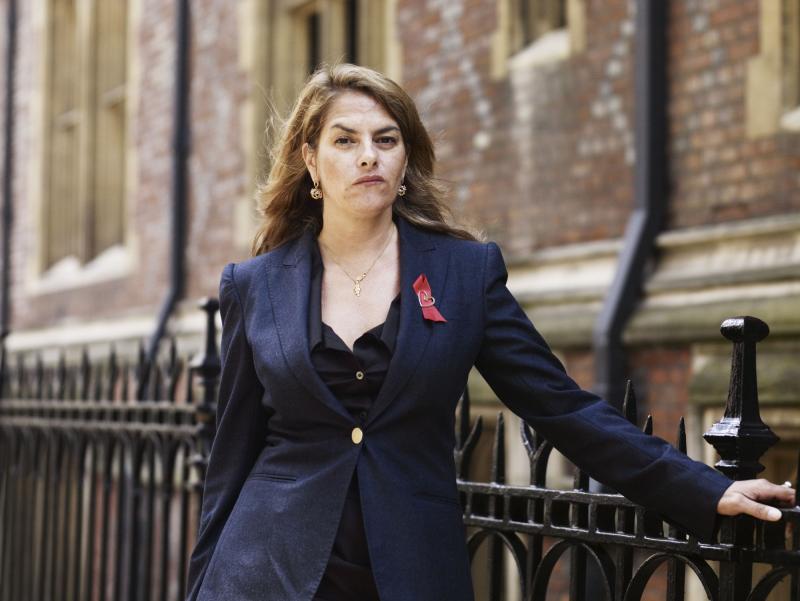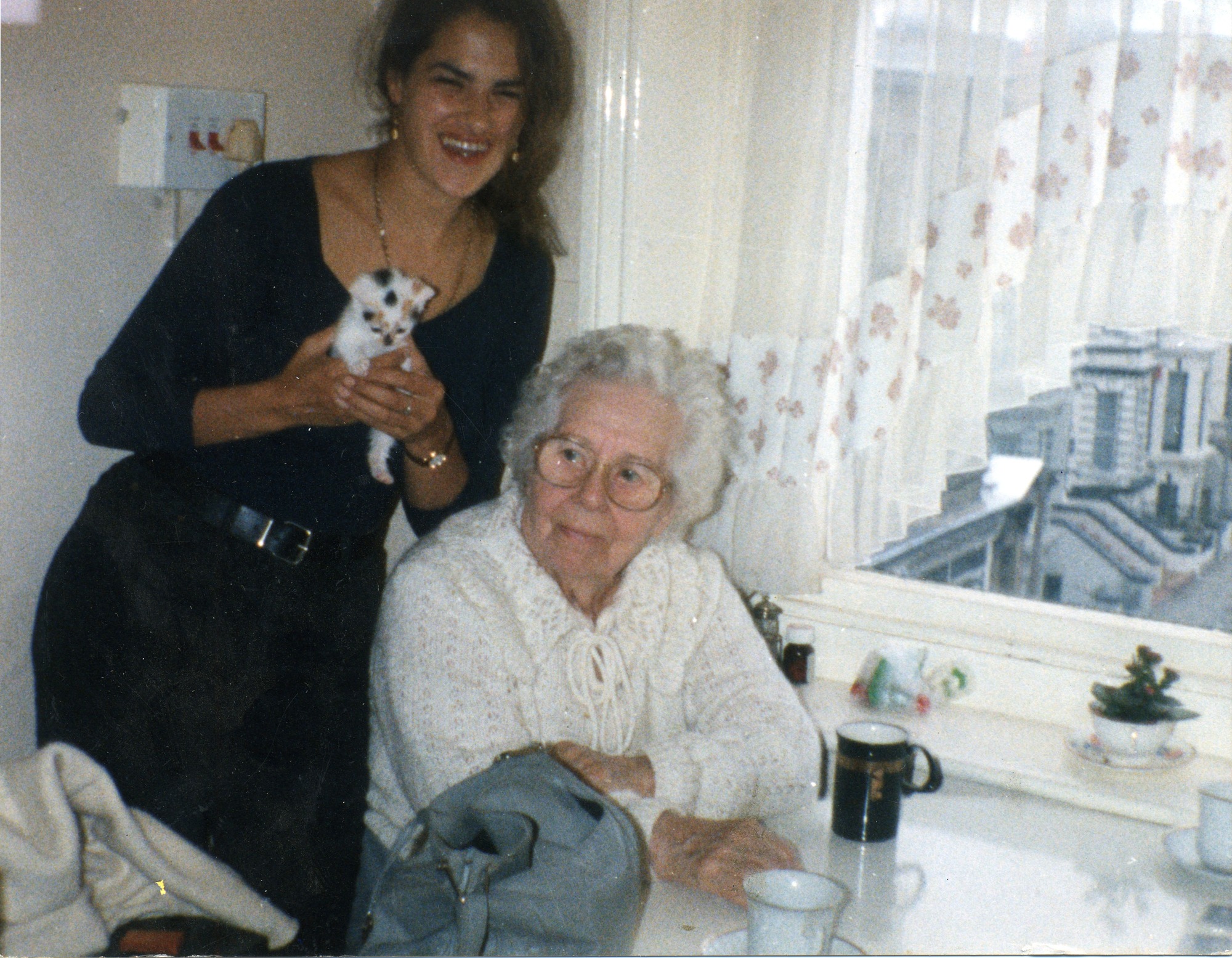Who Do You Think You Are? - Tracey Emin, BBC One | reviews, news & interviews
Who Do You Think You Are? - Tracey Emin, BBC One
Who Do You Think You Are? - Tracey Emin, BBC One
A touching romp through the artist's family tree

Tracey Emin once made a tent for which she gained some notoriety. On it, she’d appliquéd the names of everyone she had ever slept with – including, as a child, her beloved Granny Hodgkins. Sadly, the tent, called Everyone I Have Ever Slept With 1963-1995, was destroyed in a fire at Momart, the art-storage warehouse, in 2004. The loss of her tent was keenly felt, and she refused to recreate it. But genealogists in Who Do You Think You Are?
When she was shown pictures of the types of tent – like native American tepees – her gypsy ancestors would have lived in, Emin felt an affinity with her newly discovered bloodline. She was pleased that she had gypsy, possibly Romany, blood running through her veins. What symmetry. And her maternal ancestors had acquired high status, too, at least within their own tight-knit communities: they had married into some of the oldest gypsy families in Warwickshire. (Elsewhere, of course, gypsies faced daily persecution, including threats of being rounded up and whipped by the authorities.)
There are just some areas too daring even for an artist as confessional and soul-bearing as Emin
The programme ended on a teary high note, with Emin romping through grassy Tinker’s Lane where her great-great-great-grandfather’s itinerant family had settled for a while. But the family’s later history had proved to be a grim tour through London’s harsh Victorian penal system. Clearly ashamed of his gypsy heritage, Emin’s great-great-grandfather, Joseph Hodgkins, chose to sever family ties and move to Bethnal Green. Situated in the poorest part of London (at least until its reinvention by the Brit Artists – thanks Tracey) Bethnal Green was hardly much of a step up in the world. But still, it’s barely a stone’s throw from where Emin lives now in her grand house in Spitalfields. (Pictured below: Tracey Emin and Granny Hodgkins.)
 For poor Joseph, however, 12 months' hard labour followed for the theft of a large haul of fertiliser. His son, Henry, barely 16 and fresh out of reformatory, would also do time for nicking, amongst other things, a violin (which clearly demonstrated a creative streak, according to Emin). It was sad, but perhaps without them Emin wouldn’t have the impish, roguish streak she’s famous for. “I’m the last of my kind," she said, regretfully, “there’s no more like me.”
For poor Joseph, however, 12 months' hard labour followed for the theft of a large haul of fertiliser. His son, Henry, barely 16 and fresh out of reformatory, would also do time for nicking, amongst other things, a violin (which clearly demonstrated a creative streak, according to Emin). It was sad, but perhaps without them Emin wouldn’t have the impish, roguish streak she’s famous for. “I’m the last of my kind," she said, regretfully, “there’s no more like me.”
Who Do You Think You Are? has a remarkably high tear-count, and what’s always rather touching is how much its subjects end up really rooting for their bloodkin. It’s interesting, too, that Emin’s paternal bloodline was left completely untouched; her Turkish-Cypriot father has featured more heavily in Emin’s work than anyone, apart, of course, from herself.
But though an influence, he was also, effectively, a bigamist, and Emin has never pursued a relationship with her half-siblings. Too painful, perhaps, for her mother. One also notes that there are just some areas too daring even for an artist as confessional and soul-bearing as Tracey Emin.
Share this article
Add comment
The future of Arts Journalism
You can stop theartsdesk.com closing!
We urgently need financing to survive. Our fundraising drive has thus far raised £49,000 but we need to reach £100,000 or we will be forced to close. Please contribute here: https://gofund.me/c3f6033d
And if you can forward this information to anyone who might assist, we’d be grateful.

Subscribe to theartsdesk.com
Thank you for continuing to read our work on theartsdesk.com. For unlimited access to every article in its entirety, including our archive of more than 15,000 pieces, we're asking for £5 per month or £40 per year. We feel it's a very good deal, and hope you do too.
To take a subscription now simply click here.
And if you're looking for that extra gift for a friend or family member, why not treat them to a theartsdesk.com gift subscription?
more TV
 Blu-ray: The Sweeney - Series One
Influential and entertaining 1970s police drama, handsomely restored
Blu-ray: The Sweeney - Series One
Influential and entertaining 1970s police drama, handsomely restored
 I Fought the Law, ITVX review - how an 800-year-old law was challenged and changed
Sheridan Smith's raw performance dominates ITV's new docudrama about injustice
I Fought the Law, ITVX review - how an 800-year-old law was challenged and changed
Sheridan Smith's raw performance dominates ITV's new docudrama about injustice
 The Paper, Sky Max review - a spinoff of the US Office worth waiting 20 years for
Perfectly judged recycling of the original's key elements, with a star turn at its heart
The Paper, Sky Max review - a spinoff of the US Office worth waiting 20 years for
Perfectly judged recycling of the original's key elements, with a star turn at its heart
 The Guest, BBC One review - be careful what you wish for
A terrific Eve Myles stars in addictive Welsh mystery
The Guest, BBC One review - be careful what you wish for
A terrific Eve Myles stars in addictive Welsh mystery
 theartsdesk Q&A: Suranne Jones on 'Hostage', power pants and politics
The star and producer talks about taking on the role of Prime Minister, wearing high heels and living in the public eye
theartsdesk Q&A: Suranne Jones on 'Hostage', power pants and politics
The star and producer talks about taking on the role of Prime Minister, wearing high heels and living in the public eye
 King & Conqueror, BBC One review - not many kicks in 1066
Turgid medieval drama leaves viewers in the dark
King & Conqueror, BBC One review - not many kicks in 1066
Turgid medieval drama leaves viewers in the dark
 Hostage, Netflix review - entente not-too-cordiale
Suranne Jones and Julie Delpy cross swords in confused political drama
Hostage, Netflix review - entente not-too-cordiale
Suranne Jones and Julie Delpy cross swords in confused political drama
 In Flight, Channel 4 review - drugs, thugs and Bulgarian gangsters
Katherine Kelly's flight attendant is battling a sea of troubles
In Flight, Channel 4 review - drugs, thugs and Bulgarian gangsters
Katherine Kelly's flight attendant is battling a sea of troubles
 Alien: Earth, Disney+ review - was this interstellar journey really necessary?
Noah Hawley's lavish sci-fi series brings Ridley Scott's monster back home
Alien: Earth, Disney+ review - was this interstellar journey really necessary?
Noah Hawley's lavish sci-fi series brings Ridley Scott's monster back home
 The Count of Monte Cristo, U&Drama review - silly telly for the silly season
Umpteenth incarnation of the Alexandre Dumas novel is no better than it should be
The Count of Monte Cristo, U&Drama review - silly telly for the silly season
Umpteenth incarnation of the Alexandre Dumas novel is no better than it should be
 The Narrow Road to the Deep North, BBC One review - love, death and hell on the Burma railway
Richard Flanagan's prize-winning novel becomes a gruelling TV series
The Narrow Road to the Deep North, BBC One review - love, death and hell on the Burma railway
Richard Flanagan's prize-winning novel becomes a gruelling TV series
 The Waterfront, Netflix review - fish, drugs and rock'n'roll
Kevin Williamson's Carolinas crime saga makes addictive viewing
The Waterfront, Netflix review - fish, drugs and rock'n'roll
Kevin Williamson's Carolinas crime saga makes addictive viewing

Comments
I think I share a relative
My great great grandfather